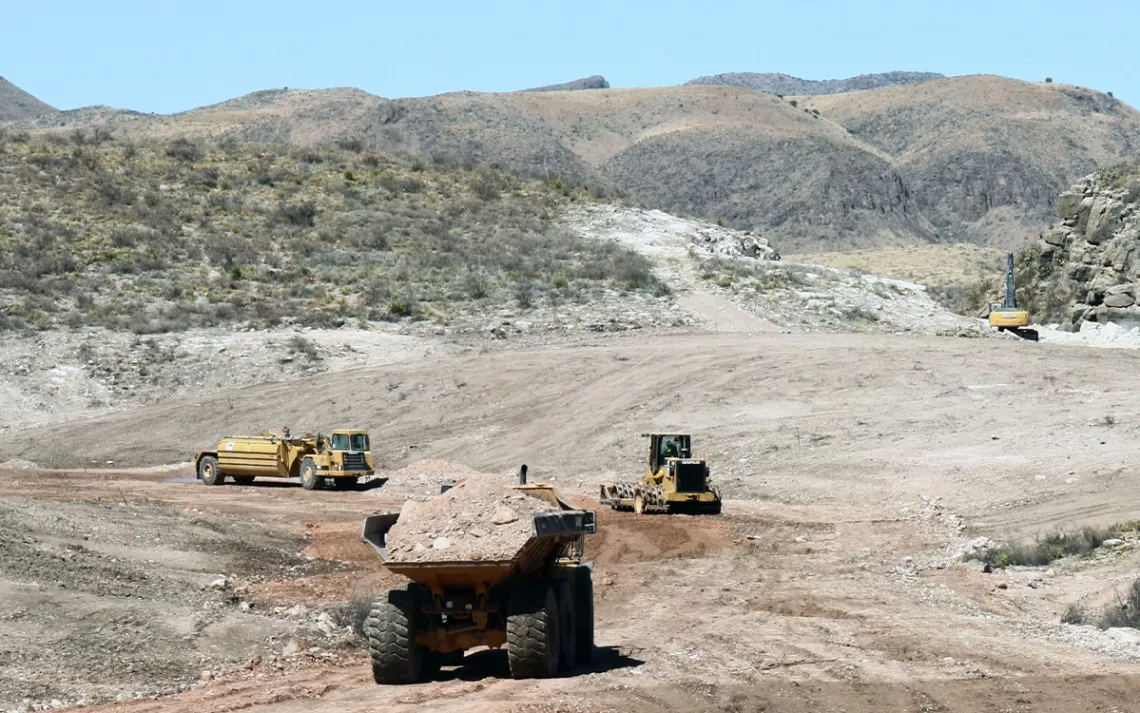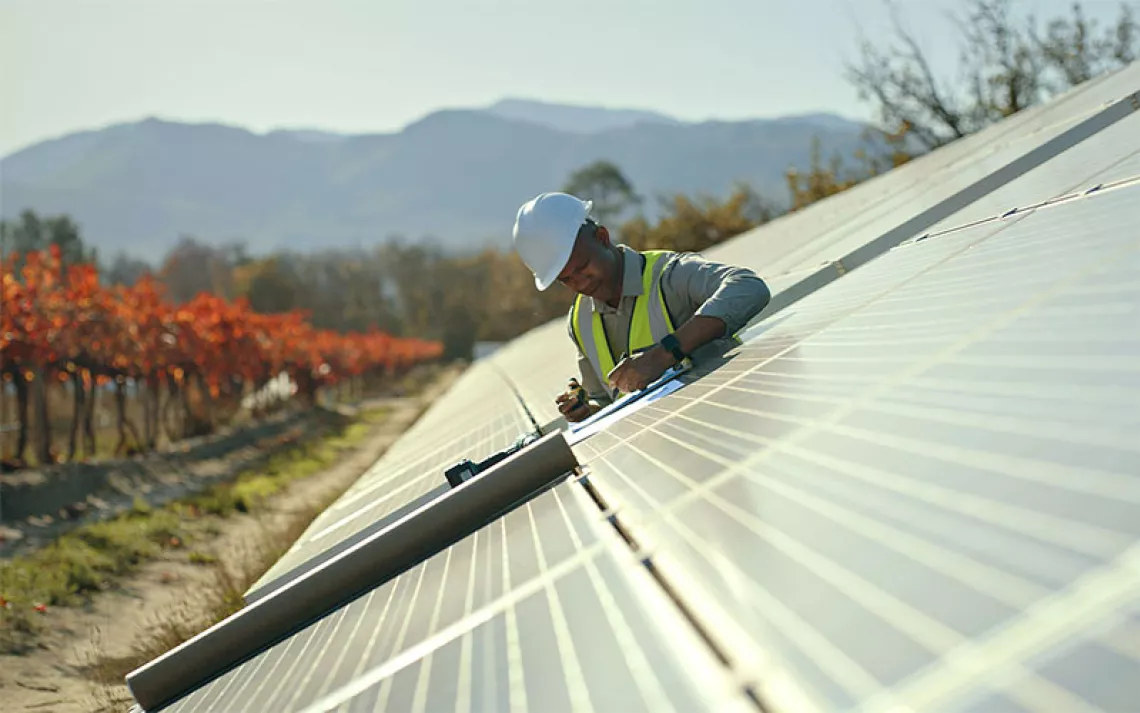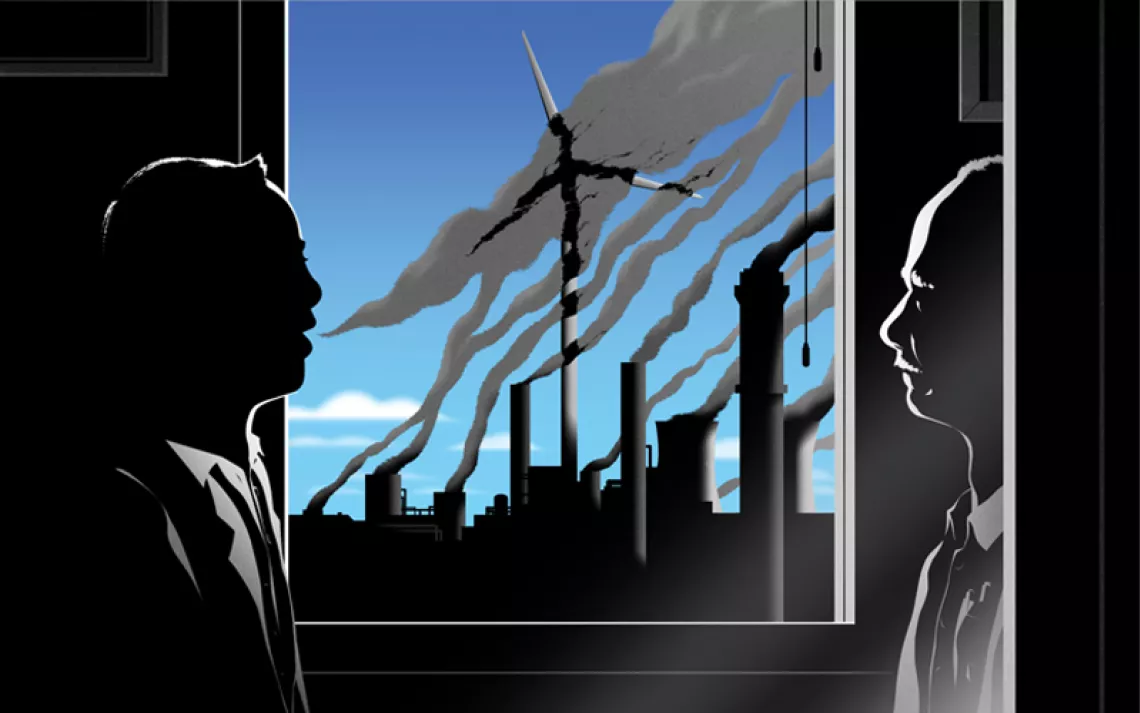The Promise and Peril of Fueling the Clean Energy Transition
Could the green energy revolution start in one of the reddest states?

A processing plant is being built to produce silver mined from the Shafter Mine Project in Shafter, Texas. | Photo by Mike Graczyk/AP
For nearly a decade, Bill Addington has been keeping a wary eye on a project that could drastically alter the landscape of Sierra Blanca, the small West Texas mountain town he calls home. Back in 2014, Texas Mineral Resources Corporation acquired a 950-acre mineral lease at Round Top Mountain from the General Land Office, the agency that oversees the state’s natural resources. Buried deep in the mountain’s geological layers are substances like beryllium, uranium, yttrium, and thorium, all crucial for developing products like renewable energy generators, batteries for cars and cellphones, and GPS technology.
When the Round Top mining operation starts in full force, it will entail pulverizing the mountain’s rock and treating it with chemicals; the crushed rock and minerals will then sit in open pits, where they will soak in chemical solutions that separate the minerals from plain rock and dirt. Addington worries that the region’s groundwater could be poisoned if any of the pits leach into the soil. “We also have deep concerns about how toxic the materials they’re bringing up [are], and how the particles could be suspended in the air above our town,” he says. Beryllium, in particular, if inhaled as a particulate, can cause a host of chronic respiratory diseases.
Today, most of these metals are produced in East Asia. The United States imports roughly three-quarters of its supply from China, and politicians have long railed against that dependence. The Biden administration has thrown its support behind shoring up “critical minerals,” investing hundreds of millions of dollars in government contracts for plants that would mine, sort, and process them in the US.
Along with the mining project, two rare-earth metal processing plants are slated to open in Texas within a few years. Combined, these projects could put the state at the forefront of the newly minted domestic industry. “The current administration’s push for these minerals is the need for all these components to transition to renewable energy sources,” says Brent Eliott, an economic geologist at the University of Texas. “The environmental and regulatory process, labor costs—it all makes it easier to import these materials from foreign sources.”
In other areas of the state, the critical minerals boom may already be in full swing. In Fort Worth, General Motors has partnered with MP Materials to open the country’s first rare-earth metal magnet facility. In a press release, the company states that it will be able to produce up to 500,000 electric vehicle magnets annually, processing nearly 1,000 tonnes of neodymium-iron-boron, which is used for things like motors and MRIs. The facility is located in an industrial park, surrounded by data centers and warehouses, and there appears to be little opposition to it. The company has promised to create 150 new high-paying jobs in exchange for a seven-year tax abatement. And while MP Materials stresses the importance of its magnets to shoring up renewable generation in the US, it will install 44 new natural gas generating units at its Fort Worth plant to power operations, according to permits filed with the Texas Commission on Environmental Quality.
In 2021, Lynas, an Australian mining company, received two contracts from the Department of Defense, totaling $120 million, to develop rare-earth separation facilities on the South Texas coast. Details are sparse, but the plant may import rare-earth metals—including some that are radioactive—from its mines in Western Australia. Initial press releases from the Department of Defense stated that the company had chosen the small Hill Country town of Hondo as its home. The town’s mayor told the San Antonio Report that he and the city council were “surprised,” and had been unaware that the decision had been finalized when it was announced.
Residents sounded off on the city’s Facebook page after a company brochure detailing the project’s scope was posted on the account. Citizens expressed concerns about the plant’s impact on local air and water pollution and the possibility of radioactive waste. “When will it be discussed publicly? How can citizens learn more to better understand the process and the company’s intentions,” one resident commented. “Or is this decision already made, and we, as citizens, have no say?”
But by 2022, Lynas seemed to have chosen a different location for its plant—the company applied for tax breaks to build the facility in Calhoun County, an industrial corridor on the Gulf Coast. In an email, the mayor of Hondo confirmed to Sierra that Lynas has moved out of town but did not answer further questions about the decision. (The region’s reigning environmentalist, Diane Wilson, who has taken on most of the companies in town, said that she hasn’t heard about the plant at all. Other worries—like nuclear reactors being placed at the Dow Chemical Plant in the path of hurricanes—are top of mind for her.)
Mining and processing critical elements has long had a dirty reputation, and for good reason: In Chile’s Atacama Desert, lithium mining is drying up water sources that have nourished Indigenous communities and native flora and fauna for centuries. In China, abandoned mines with plastic pits of highly concentrated chemical solutions haven’t been cleaned up, leading to soil, air, and water pollution.
The three companies—Lynas, MP Materials, and Texas Mineral Resources—have touted their environmental track records and commitments to sustainability with US operations. Residents, of course, aren’t all convinced, despite the promise of jobs and economic growth. (None of the companies responded to requests for comment before publication.) “Rare-earth mining [and processing] is closer to uranium than it is to gravel or sandstone,” says Aaron Mintzes, a policy expert at the environmental watchdog group Earthworks. “The radioactive qualities make it riskier.”
In Texas, the Railroad Commission, which regulates oil and gas production in the state, would oversee any uranium mining operations; the Texas Commission on Environmental Quality would regulate air, water, and soil pollution associated with the plants. But the agencies don’t have a proven track record of handling radioactive waste and pollution—and companies might be able to avoid scrutiny from federal regulators, like the Nuclear Regulatory Commission, since they’re not seeking to solely process uranium, Mintzes says. “The scariest part for me is the air pollution. When they crush the metal and ore, that dust goes up in the air and floats downstream.”
While the two processing plants appear to be done deals, for now, the mine in West Texas is still in an exploratory phase. In documents filed with the Security and Exchange Commission, the company has stated that the quantity of minerals at Round Top may make it an unprofitable enterprise. (A spokesperson for the company could not be reached by phone.) If the mine were to fail one day, it would join dozens of other boom towns turned ghost towns: old silver, copper, and mercury mining outposts nowadays host campers and adventurers soaking in stunning West Texas desertscapes.
“You know, people think we're just a dry desert when they drive through at 80 miles an hour,” says Addington, who has been fighting off ecologically damaging projects since the 1990s. “And that's why they look at us like we're a dumping ground. But this region, the whole Big Bend region, is a treasure.” The Chihuahuan Desert is the largest in North America, and it’s among the most biologically diverse desert ecosystems in the world.
Climate change is still top of mind for Addington, and he says he recognizes that displacing fossil fuels is a worthy goal. But he remains skeptical of the project. “Should we destroy that mountain, and pollute everyone downwind to make electric cars? I don’t think so. I think there have to be better solutions.”
 The Magazine of The Sierra Club
The Magazine of The Sierra Club







